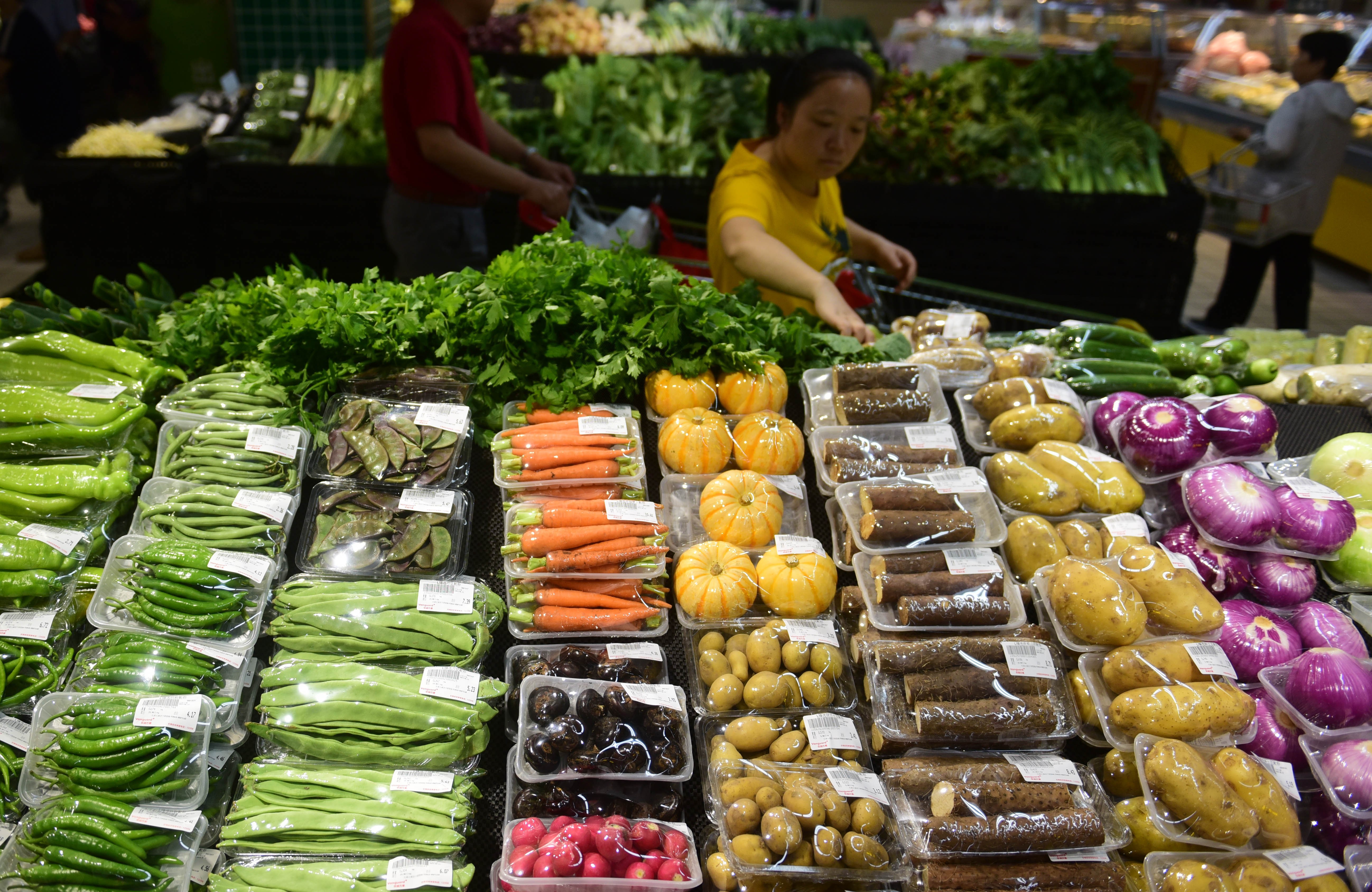China's economic growth remains stable
- By Liu Ying
 0 Comment(s)
0 Comment(s) Print
Print E-mail China.org.cn, July 18, 2019
E-mail China.org.cn, July 18, 2019

China's GDP expanded 6.3% year-on-year in the first half of 2019, according to the data released by the National Bureau of Statistics (NBS) on Monday.
That was a good performance considering the country is changing its growth drivers and adjusting its overall economic structure amid the ongoing China-U.S. trade dispute.
Despite these trade tensions, China's trade surplus continues to increase. Foreign trade in goods rose 3.9% year-on-year to reach 14.7 trillion yuan ($2.1 trillion). The total value of exports was 7.9521 trillion yuan, up 6.1%, and the imports 6.7155 trillion yuan, up 1.4%.
This left a surplus of 1.2366 trillion yuan in surplus, up 41.6% year-on-year, showing the trade dispute is not having much impact on China as had been feared; however, it has increased the costs of American companies and pushed up U.S. inflation.
China's export growth rate in the first half exceeded expectations, though it was less than the same period last year.
For the remainder of the year, consumption and investment will determine China's overall growth.
In the first half, consumption contributed for 60.1% to the GDP. The net export of goods and services contributed 20.7% (compared to minus 10.7% last year). While capital formation contributed 19.2%.
Investment showed stable growth, with spending on fixed assets growing by 5.8%, and this should continue in the second half.

Investment in real estate grew by 10.9%, maintaining the double-digit growth rate seen from last year. This also had big impact on the investment and growth of another 50 to 60 industrial sectors. Compared with developed countries, China's urbanization rate still lags, so real estate investment will continue to play an important role in maintaining future economic growth.
The growth of manufacturing investment has increased slightly in the past two months. The industry is in a transition period from old to new growth drivers as China seeks to increase high-quality manufacturing investment, the best way to achieve high-quality economic development.
Infrastructure investment is also accelerating in the first half, highway transport investment increased by 8.1% and railway transport investment 14.1%. With the rapid development of China's modern logistics industry and continuous promotion of the Belt and Road Initiative, infrastructure investment still has much room for further growth.
Also significant is the growth of investment in high-tech industry and the manufacturing technology transformation. Despite tax cuts this year, a total of 2.15 trillion yuan of local government special bonds continues to provide strong financial support for these areas.
In June, local governments bond issues totaled 183 worth nearly 900 billion yuan. With the faster opening up of the financial industry and the entry of foreign financial institutions, more investment is expected in the second half.
As mentioned already, consumption is playing a key role in maintaining good GDP growth. Total retail sales of consumer goods increased by 8.4% in the first half. Sales in June increased by 9.8%, or 1.2 percentage points faster than May, helped by wage increases and the accelerated quality upgrading.

It is precisely because China's economic growth now depends more on consumption and investment than on exports that China has been able to transform itself from an export-driven to a domestic consumption-oriented one.
The figures clearly show China's economic growth is now increasingly dependent on the driving force of domestic demand and consumption, and this trend can only continue to expand.
Presently, the middle-income population in China has reached around 400 million. With the continued economic growth and the improvement of personal incomes, China has become a consumer market with the best potential in the world. Domestic demand has increasingly become the key to promote economic growth.
In addition to the continuous optimization of demand structure, supply-side structural reform is promoting the continuous optimization of the economic structure. In the first half, the added value of the tertiary industry accounted for 54.9% of GDP, 0.5 percentage points higher year-on-year, and 15 percentage points higher than the secondary industry.
The contribution rate of tertiary industrial growth to GDP growth was 60.3%, 23.2 percentage points higher than the second industry. The service industry has maintained a good momentum of development.
Information transmission, software and information technology services, leasing and business services, transportation, warehousing and postal industries have increased their added value component by 20.6%, 7.8%, 7.3% and 7.3% year-on-year respectively.
In the first half of the year, the added value of the high-tech manufacturing industry increased by 9%, or three percentage points faster than that of all enterprises above designated size. The proportion of added value of high-tech manufacturing industry in all the enterprises above designated size increased by 0.8 percentage points year-on-year.
The regional structure is constantly being optimized. With the opening up achieving a higher level and the high-quality development of the Belt and Road Initiative being strongly maintained, there is great potential for the development of China's central and western regions.
These have accelerated the transformation and upgrading of their industrial structure, while the eastern coastal region has accelerated its innovative and technological progress, thus complementing each other.
From the statistics of the first half of the year, we can see that, no matter how China-U.S. trade develops and whatever the outcome of the bilateral economic and trade negotiations will be, China's economic growth will remain steady.
China will continue to firmly deepen its reform and opening up at a higher level. Whether the trade friction escalates or not, we have reason to expect a sound economic performance in the second half of the year, ensuring achievement of the overall economic growth target of more than 6%.
The author is a researcher with the Chongyang Institute for Financial Studies, Renmin University of China.
The article was written in Chinese and translated by Zhang Liying and Li Jingrong.
Opinion articles reflect the views of their authors, not necessarily those of China.org.cn.






Go to Forum >>0 Comment(s)